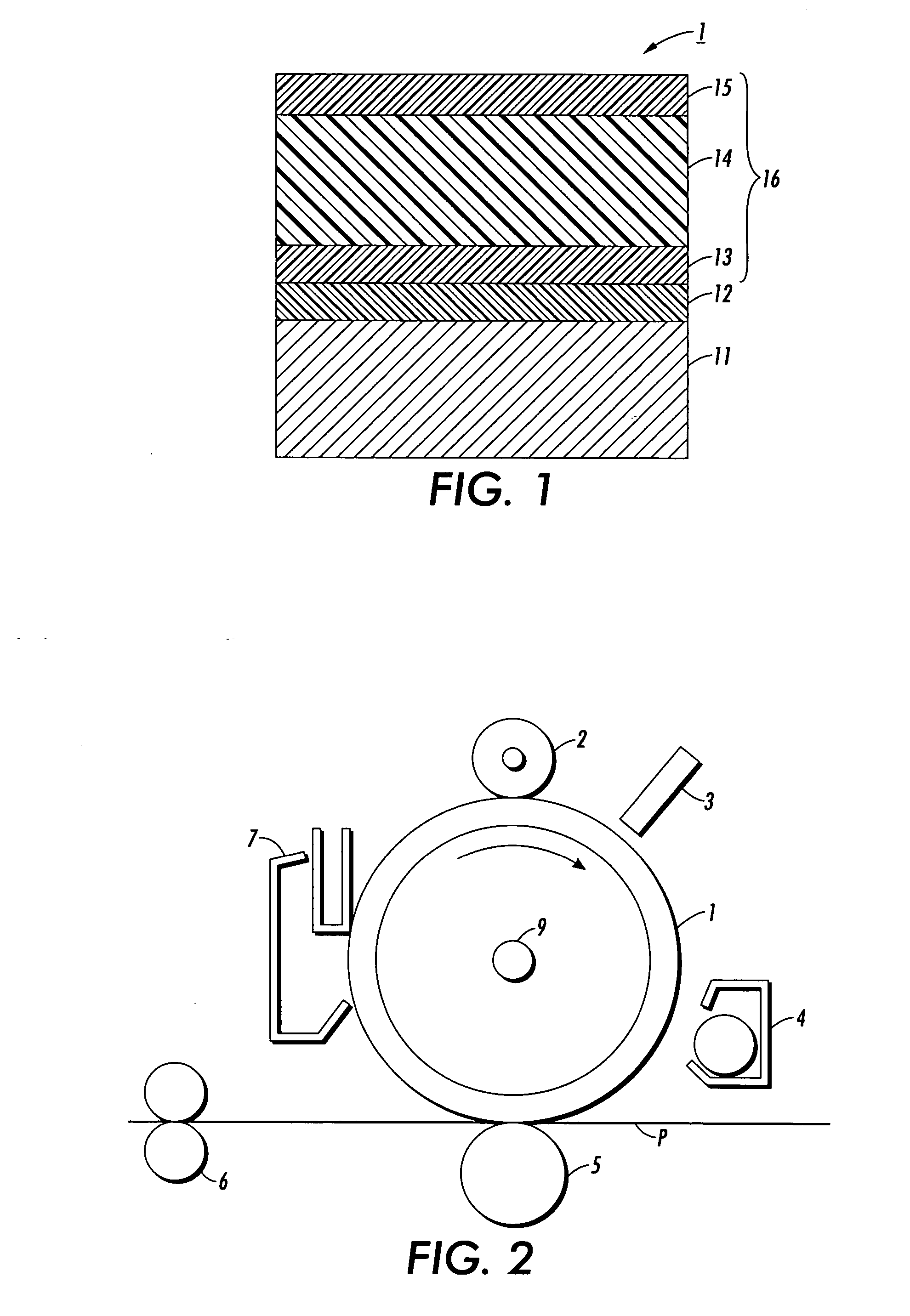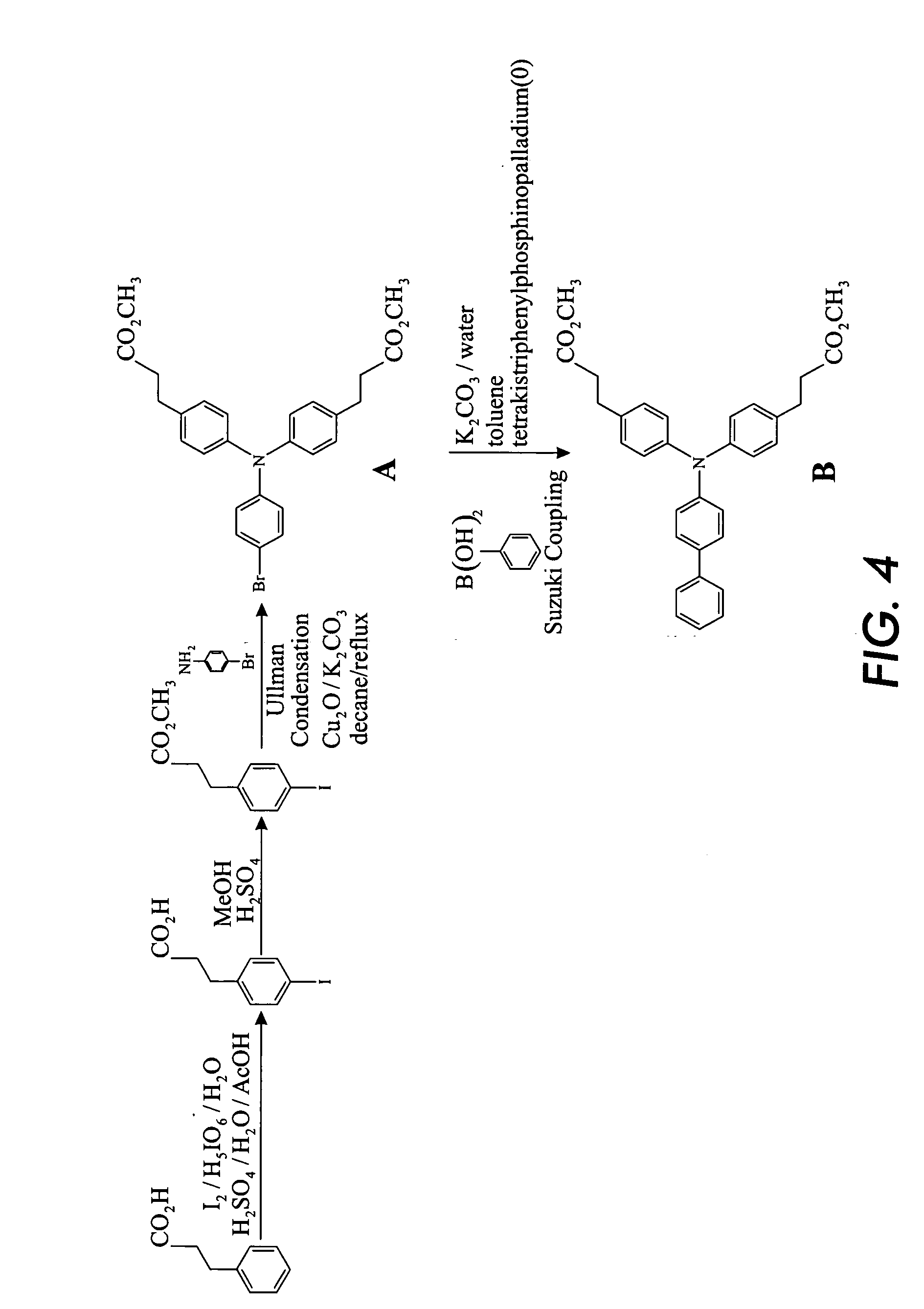Process for arylamine production
- Summary
- Abstract
- Description
- Claims
- Application Information
AI Technical Summary
Benefits of technology
Problems solved by technology
Method used
Image
Examples
example 1
Preparation of Arylamine Intermediate
[0124] Hydrocinnamic acid is iodinated to form 4-iodohydrocinnamic acid. The process is performed by mixing 201.2 g hydrocinnamic acid, 1 L acetic acid, 152 mL water, 52.8 g periodic acid, 76 mL sulfuric acid, and 144 g iodine. The mixture is heated at 105° C. for 6.5 hours. Next, 200 mL water is added, and the mixture is cooled to room temperature overnight. The solid product in the resultant mixture is filtered and washed with water, yielding 350 g unpurified 4-iodohydrocinnamic acid. Further purification is not necessary and is not conducted, and the product is used as is in the second step.
[0125] Next, the 4-iodohydrocinnamic acid is methylated. 350 g of the produced 4-iodohydrocinnamic acid is wet with 250 g water. To the mixture is added 1.4 L methanol and 1.5 g p-toluene sulfonic acid in water. The mixture is refluxed overnight, and excess methanol is removed. 500 mL toluene is added and mixed, and then excess toluene and water is remove...
example 2
Preparation of Arylamine Charge Transport Molecule
[0129] In a suitable reaction apparatus, the material from Example 1 (116 g) is dissolved in ethylene glycol (500 mL) and treated with 28 g sodium hydroxide at 150° C. for 5 hours under an inert atmosphere of nitrogen. On cooling the solution is poured into water 3 L and acidified with concentrated hydrochloric acid (˜70 mL). The precipitate formed is filtered and washed with water until the water washings are an equivalent pH to the water used for washing (usually ˜pH=6). The yield is 107 g, 98%.
[0130] This material (71 g) is dissolved in a mixture of N,N-dimethylformamide (DMF, 400 mL) and toluene (200 mL) and treated with potassium carbonate (46 g) at reflux. The produced water is completely removed by azeotropic distillation at which time a mixture of DMF (200 mL), isopropyl alcohol (IPA, 100 mL) and 3-iodopropylmethyldiisopropoxysilane (111 g) is added and the mixture heated at 90° C. under an atmosphere of nitrogen for 5 hour...
example 3
Preparation of Photoreceptor Layer
[0131] 11 parts of compound C—FIG. 5, 5.8 parts of compound III-3, 0.2 parts of 1-(dimethoxymethylsilyl)-1H,2H,2H-perfluorononane, 1 part of hexamethylcyclotrisilane and 11 parts of methanol were mixed, and 2 parts of an ion exchange resin (AMBERLIST H15) was added thereto, followed by stirring for 2 hours. Furthermore, 32 parts of butanol and 4.92 parts of distilled water were added to this mixture, followed by stirring at room temperature for 30 minutes. Then, the resulting mixture was filtered to remove the ion exchange resin, and 0.180 parts of aluminum trisacetylacetonate (Al(AcAc)3), 0.180 parts of acetylacetone (AcAc), 2 parts of a polyvinyl butyral resin (trade name: S-LEC KW-1, manufactured by Sekisui Chemical Co., Ltd.), 0.0180 parts of butylated-hydroxytoluene (BHT) and 0.261 parts of a hindered phenol antioxidant (IRGANOX 1010) were added to a filtrate obtained, and thoroughly dissolved therein for 2 hours to obtain a coating solution f...
PUM
| Property | Measurement | Unit |
|---|---|---|
| Acidity | aaaaa | aaaaa |
Abstract
Description
Claims
Application Information
 Login to View More
Login to View More - R&D
- Intellectual Property
- Life Sciences
- Materials
- Tech Scout
- Unparalleled Data Quality
- Higher Quality Content
- 60% Fewer Hallucinations
Browse by: Latest US Patents, China's latest patents, Technical Efficacy Thesaurus, Application Domain, Technology Topic, Popular Technical Reports.
© 2025 PatSnap. All rights reserved.Legal|Privacy policy|Modern Slavery Act Transparency Statement|Sitemap|About US| Contact US: help@patsnap.com



